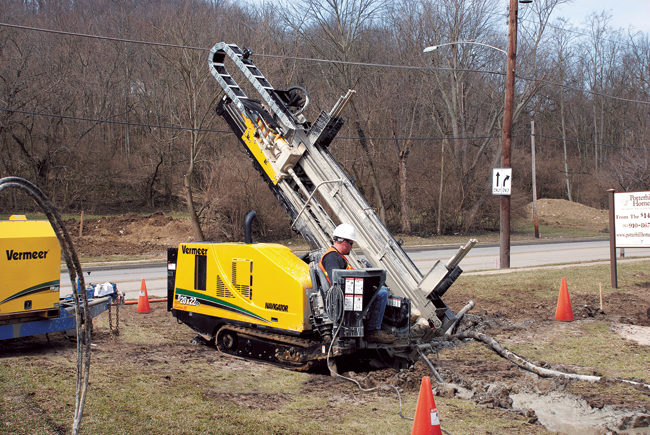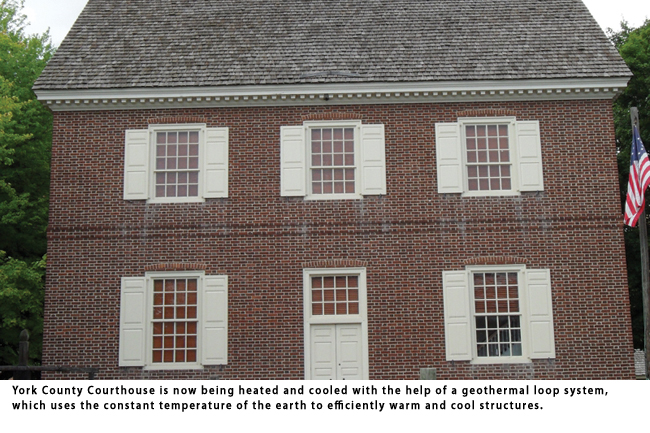The Drill Team
While serving as a de facto national government during the American Revolution, the Second Continental Congress fled to York, Pa. (known then as York Town), after British troops seized their original meeting spot on their wayward march through the streets of Philadelphia. They chose the York County Courthouse as their safe haven and it was here that these 56 Colony representatives debated and later adopted the document that came to be known as the Articles of Confederation.
Much to the chagrin of locals, the original structure was demolished in 1841, leaving Continental Square — the site where the famed Courthouse stood for nearly a century — with a huge void. Then, some 135 years later in 1976, the locals got an idea: What better way to pay homage to our nation’s bicentennial than to reconstruct this famed, historic building? So they built a replica, a structure that remains today on that stately site at the intersection of West Market Street and Codorus Creek. The unassuming, two-story Georgian-style Colonial Courthouse is visited by thousands of history-seeking tourists each year.
After 35 years, however, the time had come to do something about the aged and inefficient system that heats and cools the Colonial Courthouse. So the York County Heritage Trust met to discuss options. According to Susan Smith, the Heritage Trust’s chief financial officer, the decision to invest in geothermal made the most sense.

“To replace the existing heat pumps without using geothermal technology would have cost between $25,000 and $30,000,” Smith says. “The geothermal system cost approximately $48,000, but after crunching the payback numbers, we estimate going with a geothermal system will save several thousand dollars each year in utility bills. We will recoup the additional $18,000 spent for geothermal within seven years and continue the savings for many years beyond that.”
After completing their geothermal ground source heat pump research, the Heritage Trust put its trust in Mt. Wolf, Pa., contractor R. R. Kling & Sons. Scott Kling, who serves as general manager of PA Ground Source, the drilling and geothermal loop installation subsidiary of R. R. Kling & Sons, explains how the new geothermal system works and shares details about how the system was installed.
“The Colonial Courthouse’s geothermal heating, ventilation and air conditioning system has loops running through the ground outside that take heat out of the building in the summer and push it into the ground,” Kling explains. “Conversely, during winter months, heat from the ground is extracted and transferred back to the building. It’s an extremely efficient and cost-effective way to heat and cool nearly any structure.”
R. R. Kling & Sons got into the geothermal ground source heat pump services market in 2007 after determining there had to be a better way — especially for residential installations — than the current approach that often involved big truck-mounted, well-drilling rigs and a lot of property destruction. Yet, after subbing out a few geothermal jobs to horizontal directional drilling (HDD) contractors, the company quickly realized that due to the soil conditions, along with lot size restrictions, the residential market just wasn’t conducive to a horizontal loop system installation approach. That’s when Kling caught wind of a new type of drill offered by Vermeer.
“We researched the new D20x22FX flex angle drill that Vermeer had just come out with and went to see a demonstration,” Kling recalls. “After seeing the drill in action, especially in light of the soil formations prevalent in our area, we decided the flex angle drill was the solution we were looking for.”
Tread Lightly on Historic Ground
The focal point of the city’s historic Continental Square, the York Colonial Courthouse replica, is flanked on one side by the scenic banks of Codorus Creek, and on the other, Heritage Rail Trail — a walking/jogging/biking path that continues in a southerly direction into the State of Maryland.
“I think it is safe to say that this would be considered a high-profile situation,” Kling says. “Given the confined space we were dealing with and consideration for maintaining the integrity of the landscape, there is little doubt that the installation could not have been completed with an oversized, truck-mounted, well-drilling rig. We were able to maneuver the D20x22FX flex angle drill down the jogging trail, then through the gate and on to the property with minimal footprint.”
The ground source heat pump system designed for the Courthouse mandated 1,500 vertical ft of loops that would tie together and connect to an existing supply and return line. Completing a wall penetration into the building structure wasn’t necessary since Kling and crew could tap into the existing lines installed previously to supply the conventional chiller/cooling tower system. It was simply a matter of intersecting the established lines and splicing the new geothermal loop line into those lines already in place.

Due to space confinements of the jobsite, Kling decided to install 10 vertical lines at 150 ft deep in two rows composed of five bores each. Each loop was bored at various angles to maximize footage in the ground and to maintain the 15 ft separation between the loops at a depth of 20 ft. The first bore within the first row was completed with the drill angle set at 75 degrees; each subsequent loop within the first row was installed at a different angle to maintain the required separation tolerances. Within the second row, the first loop was installed at a 90-degree entry point with subsequent bores at different angles to again accommodate the necessary 15-ft separation.
Preparing the site where the York Colonial Courthouse replica would be built called for a foundation composed of 10 ft of fill dirt. Beyond that, it was pretty much all rock. Having drilled in this area on several previous occasions, Kling also anticipated having to control some groundwater infiltration in the bore holes, especially since the site was located within 100 ft of Codorus Creek. He was surprised, albeit delighted, that groundwater infiltration didn’t occur until reaching a depth of about 140 ft. For tooling, Kling selected a 4-in. air hammer and alternated between a 4 7/8- and 5-in. diameter bit.
With the bores completed, the ¾-in. HDP loop material was put in place and insulated with a Bentonite grout. Each of the 10 loops was then connected to a 2-in. header line that transfers the geothermal fluid to a staging vault installed near the foundation of the structure. Here the header line was connected to the originating 2-in. copper line that existed from the previous conventional chiller/cooling tower system where the fluid from each of the 10 loops circulates through the newly installed geothermal heat pump.
As for the Heritage Trust and the new heating and cooling system, R. R. Kling & Sons was able to install on their prized, historic site with minimal disruption — Smith is elated. “Although the York Colonial Courthouse represents significant events in the history of our country that happened more than 200 years ago, I’m sure the 56 members of the Continental Congress would consider the installation of our new geothermal system somewhat revolutionary in its own right,” Smith says. “The juxtaposition of the old versus new … it’s all very interesting.”
Randy Happel is a features writer for Two Rivers Marketing, based in Des Moines, Iowa.

Comments are closed here.